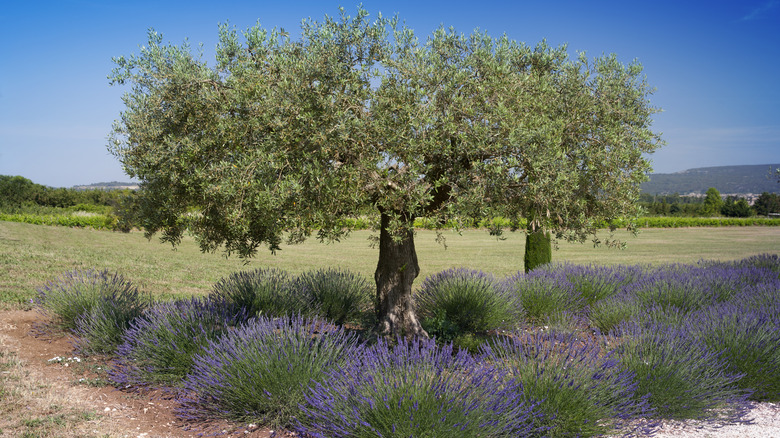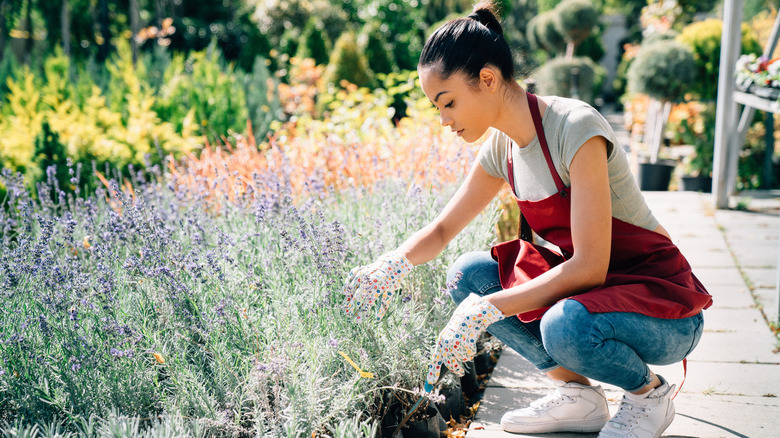Companion planting is the practice of growing different plant species near each other, and farmers have been using it for generations to boost crop production. It helps gardeners stay organized and maximize their space by grouping plants that like the same sun, soil, and water conditions. Diversifying can help slow the spread of pests and diseases, which can spread rapidly when many plants of the same species are grown close together. Taller plants can help shade their smaller neighbors, while plants with deeper roots can draw beneficial nutrients into the soil to help those around them. Lavender and fruit trees are two ideal companion species that will benefit your garden when combined.
Lavender is a perennial shrub that produces large numbers of soft, fragrant purple blooms on spikes. You’ve probably seen — and smelled — lavender in many home products, from essential oil and potpourri to lotions and sleep aids. But lavender’s fragrance is even more useful outside, where it helps drive away pests and invite helpful pollinators. This superpower is especially helpful for fruit trees.
Why lavender is your fruit tree’s best friend

Lavender and fruit trees are a gardener’s dream team for a few reasons. To start, they have similar environmental needs — an essential prerequisite if you plant them together. Fruit trees like to be watered heavily every week or two and then allowed to dry out before the next watering. Lavender, which originated in the hot, dry Mediterranean region, enjoys a similar watering schedule. And they both prefer lots of sun.
When you plant lavender under a fruit tree, the tree’s foliage helps protect the lavender from getting waterlogged when it rains. Meanwhile, lavender helps repel common fruit tree pests, like flies and moths, because its intense fragrance distracts these unwanted visitors. But this fly-repelling plant will simultaneously attract helpful pollinators. To grow fruit, most trees require cross-pollination, the transfer of pollen from the flowers of one tree to another of the same species. Lavender’s fragrant blooms attract lots of the pollinators fruit trees rely on. You’ll see bees, butterflies, and hummingbirds flocking to your lavender — an added benefit if you’re a wildlife enthusiast.
How to plant and maintain lavender

Lavender is adapted to hot climates, full sun, and dry, sandy soil. The most common cultivar, English lavender (Lavandula angustifolia), is hardy in USDA zones 5 to 10. It prefers well-draining soil and can suffer if the ground gets too wet. Mix an inch of compost into the top 4 to 8 inches of soil before planting to improve soil drainage and set your lavender up for success. Space lavender plants 1.5 to 2 feet apart to give them room to grow.
Regular pruning stimulates your lavender bush to produce flowers, which are key to the plant’s smell and, thus, its ability to attract pollinators and deter pests. If your lavender is in a pot, repot it every spring in a larger container with fresh soil — this not only allows it to grow but encourages it to produce new flowers year after year. If your lavender is in the ground, mulch it every fall to help it survive the winter and continue protecting your fruit tree from pests when the next growing season rolls around.



